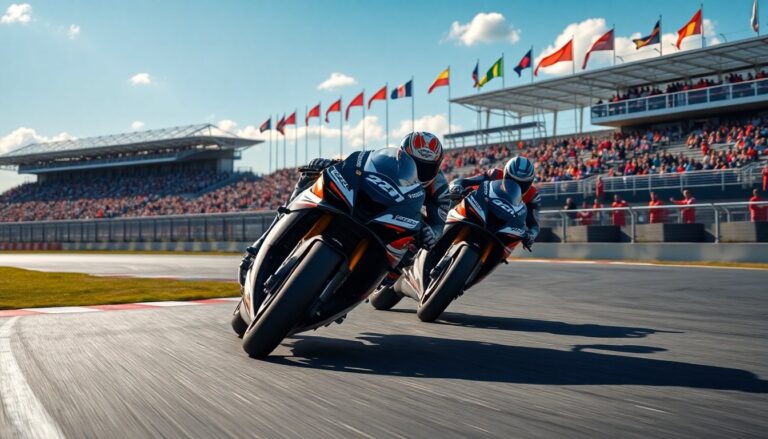Argomenti trattati
MotoGP, the pinnacle of motorcycle road racing, captivates fans globally with its thrilling speed, intense rivalries, and cutting-edge technology. This premier class of the Fédération Internationale de Motocyclisme (FIM) World Championship has evolved significantly since its inception, showcasing not only the best riders but also the most advanced motorcycles in the world.
As we delve into the intricacies of MotoGP, we will explore its history, the technological advances that keep it at the forefront of motorsport, and the fierce competition among teams and riders.
The evolution of MotoGP
The journey of MotoGP began in 1949, originally known as Grand Prix motorcycle racing. Over the decades, the sport has undergone numerous changes in regulations and technological advancements. The shift from 500cc two-stroke engines to modern 1000cc four-stroke machines marks a significant evolution, enhancing speed and performance.
In the late 1990s, the introduction of electronic systems allowed teams to optimize their bikes in real-time. Telemetry systems, which collect data on various performance metrics, have become essential for teams to gain a competitive edge. These developments have transformed the racing experience, making it not just a test of skill but a battle of engineering prowess.
The role of technology in MotoGP
Technology plays a pivotal role in modern MotoGP racing. Each team invests heavily in research and development to create bikes that push the limits of speed and handling. The use of materials like carbon fiber and aluminum in bike construction makes them lighter and more durable, enhancing performance.
Moreover, the implementation of advanced aerodynamics has led to significant improvements in bike stability at high speeds. Features such as winglets and fairings are meticulously designed to reduce drag and increase downforce, allowing riders to maintain control while navigating sharp turns.
The competitive landscape
The competition in MotoGP is fierce, with teams like Yamaha, Ducati, and Honda continually vying for supremacy. Each season brings new rivalries, as established champions face off against rising stars. This dynamic creates an unpredictable and thrilling atmosphere for fans and riders alike.
Riders such as the legendary Valentino Rossi and current champion Francesco Bagnaia have become household names, not just for their talent but for their ability to connect with fans. Their unique styles and personalities add to the drama of every race, making MotoGP not just a sporting event but a spectacle.
Challenges and future of MotoGP
Despite its popularity, MotoGP faces challenges, particularly in adapting to environmental concerns. The push towards sustainability has led to discussions about electric motorcycles in the future. While traditionalists may resist change, the integration of electric technologies could attract a new generation of fans.
Furthermore, as the sport grapples with balancing speed and safety, innovations in protective gear and track design will continue to evolve. The aim is to provide thrilling races while ensuring the safety of riders, a priority for both organizers and fans.
As we delve into the intricacies of MotoGP, we will explore its history, the technological advances that keep it at the forefront of motorsport, and the fierce competition among teams and riders.0

